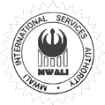1. What are Expert Advisors (EAs)?
Expert Advisors are essentially automated trading systems that run on your trading platform, such as MetaTrader 4 (MT4) or MetaTrader 5 (MT5). They are written in a programming language called MQL4 (for MT4) or MQL5 (for MT5) and can be customized to execute specific trading strategies based on technical indicators, chart patterns, or other market conditions.
How EAs Work:
- EAs continuously monitor the market for trading opportunities based on your pre-defined rules.
- When a signal is generated, the EA automatically executes a trade, including setting the entry price, stop-loss, and take-profit levels.
- The EA can also manage your trades, adjusting stop-loss and take-profit levels as the market moves.
Types of EAs:
- Trend-Following EAs: These EAs follow the trend of the market, entering trades in the direction of the trend and exiting when the trend reverses.
- Counter-Trend EAs: These EAs trade against the trend, looking for reversals or pullbacks.
- News Trading EAs: These EAs specialize in trading around news events and economic data releases.
- Scalping EAs: These EAs focus on making quick profits from small price movements.
2. Benefits of Using Expert Advisors:
- Eliminates Emotional Trading: EAs remove emotions from the trading process, ensuring that trades are executed based on logic and pre-defined rules.
- 24/7 Trading: EAs can monitor the market and execute trades 24/7, even when you're not available.
- Faster Execution: EAs can execute trades much faster than humans, potentially leading to better entry and exit prices.
- Backtesting and Optimization: EAs can be easily backtested and optimized on historical data to assess their performance and refine their parameters.
3. Drawbacks of Using Expert Advisors:
- Over-Optimization: EAs can be over-optimized to fit historical data, leading to poor performance in live trading.
- Technical Glitches: EAs are susceptible to technical glitches and errors, which can result in unexpected losses.
- Lack of Flexibility: EAs may not be able to adapt to changing market conditions as effectively as human traders.
4. Developing Your Own Expert Advisor:
If you have programming skills, you can develop your own EA to automate your trading strategy. This requires a deep understanding of MQL4/5 programming language, as well as technical and fundamental analysis. It's a complex process but can be highly rewarding if you have the expertise and resources.
5. Choosing a Pre-Built Expert Advisor:
If you don't have programming skills, you can choose from a wide range of pre-built EAs available online. When choosing an EA, consider the following factors:
- Performance: Look for EAs with a proven track record of profitability on a demo account. Check for verified results and reviews from other users.
- Transparency: Choose an EA with clear and transparent trading rules and parameters. Understand how the EA works and what signals it uses to enter and exit trades.
- Support: Ensure that the EA provider offers reliable customer support in case you encounter any issues or have questions about the EA.
- Cost: EAs can range in price from free to several thousand dollars. Choose an EA that fits your budget and offers value for money.
6. Backtesting and Optimizing Expert Advisors:
Before deploying an EA in live trading, it's crucial to thoroughly backtest and optimize it.
- Backtesting: Backtesting involves running the EA on historical data to simulate its performance under various market conditions. This helps you assess its profitability, risk profile, and overall effectiveness.
- Optimization: Optimization involves fine-tuning the EA's parameters to improve its performance. This can be done manually or using optimization tools provided by your trading platform or third-party software.
Key Considerations for Backtesting and Optimization:
- Data Quality: Use high-quality historical data that accurately reflects real market conditions. Make sure the data is from a reputable source and covers a sufficiently long period to capture different market cycles.
- Realistic Settings: Ensure that your backtesting settings, such as spread, commission, and slippage, are realistic and reflect your actual trading environment. This will help you get a more accurate picture of how the EA will perform in live trading.
- Over-Optimization: Avoid over-optimizing your EA to fit historical data perfectly. This can lead to unrealistic expectations and poor performance in live trading. Focus on creating a robust EA that performs well across a variety of market conditions.
7. Risk Management with Expert Advisors:
Even though EAs automate your trading, risk management remains paramount.
- Set Realistic Expectations: Don't expect an EA to generate profits in every market condition. Understand the EA's strengths and weaknesses and adjust your expectations accordingly.
- Monitor Your Trades: Regularly monitor your EA's performance and make adjustments as needed. Don't blindly trust the EA to make all the right decisions. Keep an eye on market conditions and be prepared to intervene if necessary.
- Use Stop-Loss Orders: Always set stop-loss orders to limit your potential losses. Even the best EAs can experience losing streaks.
- Diversify Your Portfolio: Don't rely solely on one EA. Consider using multiple EAs with different strategies to diversify your risk.
8. Building a Robust Trading System with EAs:
EAs can be a valuable component of a comprehensive trading system. By combining EAs with your own manual trading strategies, you can create a diversified approach that leverages the strengths of both automation and human judgment.
- Complementary Strategies: Use EAs to automate certain aspects of your trading, such as trend following or scalping, while you focus on other strategies that require more discretion and analysis.
- Risk Mitigation: Use EAs to hedge your manual trades or to take advantage of opportunities that you might miss due to time constraints or other limitations.
- Continuous Improvement: Regularly review and update your EAs based on their performance and changing market conditions. Keep up with the latest developments in algorithmic trading and incorporate new techniques or strategies as needed.
Conclusion:
Automated Forex trading with Expert Advisors can be a powerful tool for traders who want to enhance their efficiency, consistency, and profitability. By understanding how EAs work, their benefits and drawbacks, and how to develop or choose the right EA for your trading strategy, you can harness the power of algorithms to achieve your trading goals. Remember, EAs are not a magic bullet, and they should be used in conjunction with sound risk management practices and a disciplined approach to trading.







